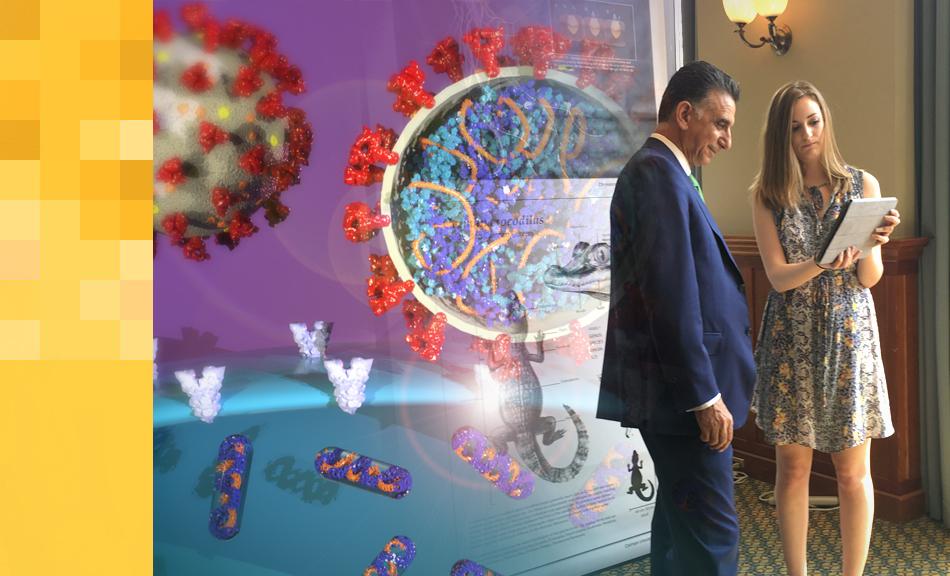Admissions & Portfolio
Admissions & Portfolio
Admissions & Portfolio
Admission to Rowan’s Biomedical Visualization BFA is a selective process designed to identify students with both a strong artistic foundation and a passion for science, medicine, and technology. Applicants are evaluated on their academic preparation, portfolio of artwork, and written statement of intent.
Application Requirements
-
University Application – Apply to Rowan University through the standard undergraduate admissions process.
-
Portfolio Submission – Submit a portfolio of 10–15 pieces of original artwork that demonstrate skill, creativity, and observational ability. Portfolios should highlight:
-
Drawing from observation (figure, anatomy, still life, or nature studies)
-
Scientific or anatomical sketches where possible
-
Digital illustration, design, or 3D work (optional but encouraged)
-
Works that reflect creativity, critical thinking, and attention to detail
-
-
Essay/Statement of Intent – A short essay describing your interest in biomedical visualization and how you see the intersection of art, science, and medicine shaping your career path.
Transfer & Current Students
Students entering Rowan as transfers or current BFA in Studio Art, BA in Art, BS and BA degrees in the Health Sciences, Biology majors may request a portfolio review for entry into the BFA track. Qualified students will be transitioned into the Biomedical Visualization BFA after successful review of their work and academic record.
Preparing Your Portfolio
Strong portfolios demonstrate both technical ability and intellectual curiosity. We recommend:
-
Emphasizing observational drawing as the core of your submission.
-
Including examples that show versatility—such as traditional drawing, digital media, 3D modeling, or design projects.
-
Highlighting any prior work that connects art with science, medicine, or technology.
-
Presenting your portfolio in a professional format, with clean images, organized sequencing, and concise labeling.
What We’re Looking For
The admissions committee seeks students who are:
-
Strong in drawing and visualization skills
-
Passionate about science, medicine, and technology
-
Ready to engage in a rigorous, interdisciplinary program that combines creativity with scientific accuracy
HOW TO APPLY
Follow these steps to apply to Rowan University’s Biomedical Visualization BFA (BMV) program:
Step 1: Apply to Rowan University
-
Complete the Rowan University Undergraduate Application through the Rowan Admissions Portal.
-
Select Biomedical Visualization BFA as your intended major.
Step 2: Submit Your Portfolio via SlideRoom
-
Prepare a portfolio of 10–15 pieces of original artwork.
-
Portfolios must be submitted through Rowan’s official SlideRoom portal.
-
Include examples of:
-
Observational drawing (figure, anatomy, still life, or natural forms)
-
Creative or design projects (traditional or digital media)
-
Optional: 3D modeling, animation, or interactive projects
-
-
Upload all work in a professional format (clear images, labeled, organized).
Step 3: Write Your Statement of Intent
-
Submit a 1 page essay through SlideRoom that explains:
-
Why you are interested in Biomedical Visualization
-
How you see art, science, and medicine intersecting in your career
-
What skills, experiences, or goals you will bring to the program
-
Step 4: Portfolio Review
-
Your portfolio and essay will be reviewed by BMV faculty.
-
Admission is based on both your artistic potential and your readiness for the rigorous science and visualization curriculum.
-
Transfer students and current BA in Art, BFA in Studio Art and BS, BA in Health and Science students may request a portfolio review to move into the BFA track.
Step 5: Receive Your Decision
-
Please allow for 10-15 days for a full review.
-
Once your application and portfolio are reviewed, Rowan Admissions will notify you of your decision.
-
If admitted, you’ll receive additional information about advising, course registration, and program orientation.
